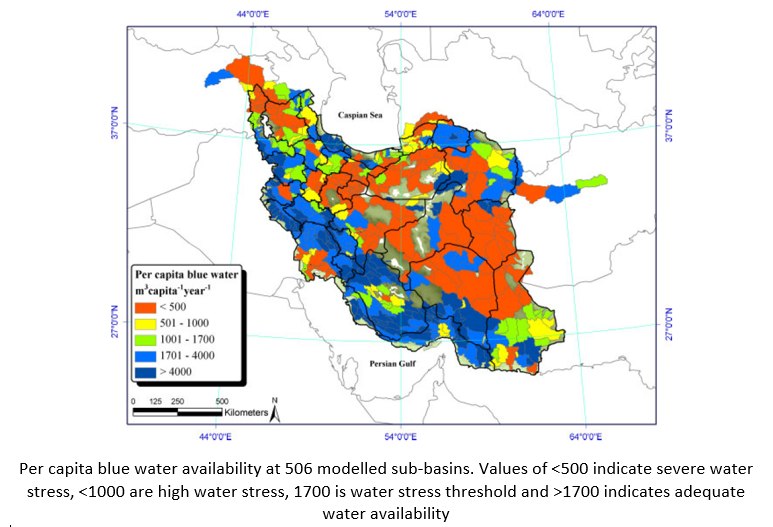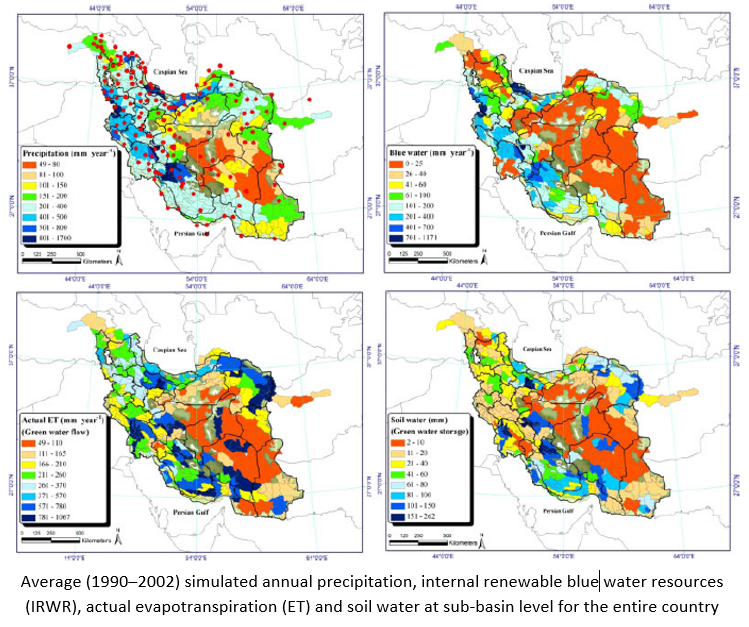Renewable Water Resources of Iran
Water Resources of Iran

Knowledge of a country's internal renewable water resources is strategic information needed for the long-term planning of a nation's water and food security, among many other needs. New modeling tools allow this quantification with high spatial and temporal resolution.
Water Resource Assessment in Iran
In this project, we used the program Soil and Water Assessment Tool (SWAT) in combination with the Sequential Uncertainty Fitting program (SUFI-2) to calibrate and validate a hydrologic model of Iran based on river discharges and wheat yield, taking into consideration dam operations and irrigation practices. Uncertainty analyses were also performed to assess the model performance. The results were satisfactory for most of the rivers across the country. We quantified all components of the water balance, including blue water flow (water yield plus deep aquifer recharge), green water flow (actual and potential evapotranspiration), and green water storage (soil moisture) at sub-basin level with monthly time-steps. The spatially aggregated water resources and simulated yield compared well with the existing data. The study period was 1990–2002 for calibration and 1980–1989 for validation. Concerning the staple food crop in the country, 55% of irrigated wheat and 57% of rain-fed wheat are produced every year in water-scarce regions. The vulnerable situation of water resources availability has severe implications for the country's food security, and the looming impact of climate change could only worsen the situation. This study provides a strong basis for further studies concerning water and food security and the water resources management strategies in the country and a unified approach for the analysis of blue and green water in other arid and semi-arid countries.
